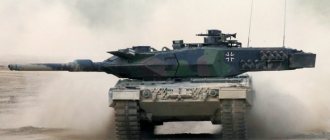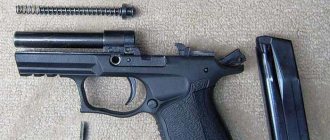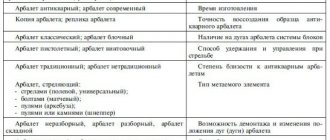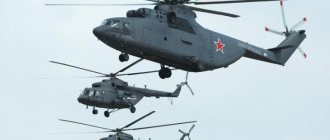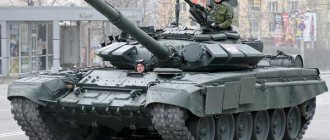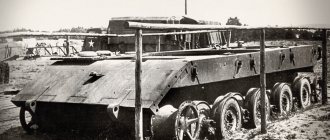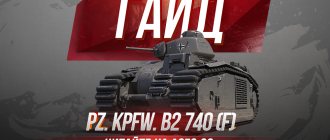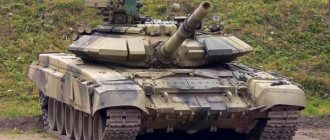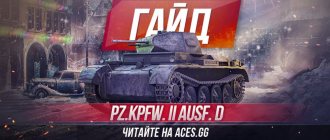At the present stage, many countries are focusing their attention on the military industry. And it’s no secret that tanks are becoming a source of pride in this area. Therefore, there is nothing strange in the fact that attempts are being made to create more advanced combat vehicles. Weapon systems are being improved, armor is being developed, new materials are being used in construction - all this is aimed at obtaining a formidable, powerful tank. And in this review we will consider a German model called “Leopard”. This tank has undergone many changes and modifications throughout its history. All this is discussed in more detail in this article.
The creation of a German fighting vehicle
Construction of the tank began in 1957. Developments were carried out with the participation of France. But the attempt to design a single tank was not successful. It should be noted that work in both countries took place in parallel. And in 1963, when comparative tests of German and French models had not yet been carried out, Germany decided to abandon the partnership. As a result, each country developed its own national models. The Leopard is a German tank, and the AMX-30 is a French combat vehicle. During German development, priority was given to firepower and maneuverability. Subsequently, as a change of views occurred, German designers began to take the leading position in the parameter of tank protection in battle. For this reason, several measures were taken to improve its level.
The first order for the production of combat vehicles with a volume of 1,500 models was placed back in 1963. And already in 1965, the production tank “Leopard-1” was released. He was solemnly handed over to the Bundeswehr. By the mid-70s, the planned program was completed. Several series of combat vehicles were designed, differing in a variety of modifications.
Photo and video
Leopard 1 in winter camouflage
Repair and recovery vehicle Bergepanzer 2
Gepard self-propelled anti-aircraft gun
A chopped-up Leopard I tank in the Museum of the History of the First World War in Leipzig More material on the topic
- M4 Sherman
- New deadly tank T90MS
What was different about the tank?
What can you say about the Leopard combat transport? The tank had a classic general layout. The driver was located in the bow. His working position was shifted to the starboard side. The commander of the vehicle, as well as the gunner, were located in the combat unit, to the right of the gun. To her left was the loader.
The engine-transmission section, in which the engine was located longitudinally, occupied a volume of 6.2 cubic meters. m in the rear part of the hull. The capacity of all fuel tanks without exception was equal to 985 liters. They were located in the MTO. The ammunition for the gun was located in the front part, slightly to the left of the driver. There was also ammunition in the fighting compartment. The volume of the tank was 18.2 cubic meters. m. Of these, about 4.2 cubic meters. m accounted for the tower.
Combat equipment of the German model
What kind of weapons did the Leopard have? The tank was equipped with a 105-mm rifled gun, which was manufactured in Germany under an English license. The ejector was installed in the high pressure area. Due to its eccentric location on the barrel, there was no decrease in the angle of descent of the gun. Firing accuracy was increased through the use of a heat-protective casing. Special types of recoil devices were also used. They contributed to the creation of low resistance to rollback until the projectile took off. The barrel was designed for approximately 400 shots.
The main gunner's sight, which the Leopard-1 tank had, was combined with a laser rangefinder. By using a thermal imaging channel, it was possible to achieve shooting at night. The range was 2000 meters. The sight's field of view was independently stabilized in several planes. An automatic system was installed in the tank to calibrate the sight. There was also a system that monitored the functioning of the fire control complex.
In addition to the main sight, there was an auxiliary one. The commander's and gunner's sights were equipped with curtains that closed automatically. Due to them, it was possible to eliminate short-term blindness at the time of the shot at night. Thanks to the electronic ballistic computer, it was possible to develop corrections for the target’s speed, depending on the side wind, range, gun trunnion roll, temperature, etc. Two machine guns were auxiliary weapons. One machine gun was coaxial with a cannon, the other was anti-aircraft.
Protecting a tank from enemy shells
What else can be said about the Leopard combat vehicle? The tank, or rather its hull, was welded using monolithic armor plates. The frontal sheet was fixed at an angle of 60 degrees. The sides were protected by sectional anti-cumulative screens, for which rubberized steel sheets were used. Their thickness reached 10 mm. The cast turret was equipped with additional protection. The tank was equipped with FVU and fire-fighting devices. In order to be able to set up smoke screens, 8 grenade launchers were used. Deforming paint was applied to the tank, which made it difficult to detect with night and day vision devices. Reducing the level of heat radiation from the power plant was made possible by mixing engine exhaust gases with the air flow coming from a special fan.
One of the best tanks
The main German combat vehicle is the Leopard 2. The tank of this model is considered by some experts to be the best, as it has a perfect fire control system, an excellent weapon, and durable armor. Regardless of its weight of 70 tons, this machine is capable of speeds of up to 72 km/h. At the same time, the tank can slow down in a few seconds.
In 1979, Germany first adopted the Leopard-2. The tank was immediately able to prove itself on the positive side. In this regard, its deliveries to other countries began.
The design of the tank was carried out according to a joint project between America and West Germany. It all started with the creation of a fundamentally new machine, the MVT-70. But this project failed. In 1969, after the project began to collapse, a model called “Kailer” emerged, which in some respects resembled the MVT-70. In 1970, German designers decided to get serious about the development of MBT.
Main goals and tasks
The main publicly stated purpose of creating the Leopard 2 tanks was called countering the “Soviet tank avalanche”, the rapid onset of which was expected by NATO strategists in the event of a hypothetical full-scale war in Europe. At the same time, the possibility of limited use of nuclear weapons was not excluded.
Accordingly, like all armored vehicles of the Cold War, Leopard 2 was equipped with a ventilation system designed to ensure its stability in areas contaminated with weapons of mass destruction. The ventilation system capacity was 300 cubic meters per hour, the duration of the air purification process was designed for 48 hours of continuous operation.
Since a large-scale conflict between NATO and the Soviet Union never happened, the actual use of modern German tanks was reduced to routine service and periodic exercises. With the beginning of the 1990s, the “Soviet threat” became a thing of the past, and the main German tanks were gradually reoriented to participate in the “peacekeeping missions” of the North Atlantic Alliance.
Since these tasks did not require a large number of machines, a significant part of them was sold to third countries. For many years, Leopard-2 turned into a branded export product, limiting itself to not particularly significant upgrades. But the worsening of NATO’s relations with Russia over the last five years has again returned the issue of “updating” German tanks to the agenda, although so far everything has been limited to propaganda statements.
More advanced models
In parallel, two versions of the tank were being developed. Leopard-2K was supposed to be equipped with standard weapons. Another model, Leopard-2FK, was supposed to be armed with anti-tank missiles. In addition, a variety of fire control systems, as well as chassis and weapon components with hydropneumatic suspension, were tested. The first models were developed in 1973.
Production of the tank ended in 1987. However, a year later an order was received involving the development of 250 combat vehicles of the Leopard-2A4 modification. Production ended in 1990. However, the designers never stopped modifying the car. The latest model is the Leopard-2A7+ tank. It was he who was recognized by many experts as the best MBT (main battle tank).
History of creation
In the post-war Federal Republic of Germany (FRG), tank building, which has long-established traditions and a powerful production base, quickly revived and reached the world level. The German Leopard tank, created as a response to Soviet tanks of the 1950s, was highly maneuverable and powerfully armed, but was quite vulnerable. He reflected the ideas of his time, which by the second half of the 1960s had already lost their relevance.
With the advent of the first technical solutions that provided effective armor protection against cumulative ammunition, German tank builders began developing a new model of a promising tank. At first, the project, called MBT-70, was carried out by Germany together with the United States and intended to replace the M48 tank in service with these countries, but pretty soon the Americans decided to act independently.
In Germany, the program was renamed more than once (to “Gilded Leopard”, then to “Vepr”, which had much in common with the concept of “Leopard-1”), until at the stage of testing the first armored vehicles (in 1973) the Leopard-2 tank "did not receive its final name. The official start date of its development is considered to be 1967. From that moment on, the Germans carried out the work mainly on their own.
The main contractor in the creation of the new tank was Krauss-Maffei AG, which had become a major supplier of armored vehicles for the Wehrmacht since the time of the Third Reich. The Porsche, Wegmann and AEG Telefunken companies had an equally impressive reputation, taking upon themselves, respectively, the development of the chassis, tank turret and modern fire control system (FCS). By 1974, the main stages of design were completed, and prototypes of new tanks passed their first tests.
Several more years were spent on improvements, mainly of a technological nature. In 1977, the tank was officially adopted by the Bundeswehr, and two years later began to enter combat units.
Equipment of combat vehicles
The tank is equipped with combined armor. In addition, special fastenings are provided on the front plate for additional armor. The sides are protected by multilayer anti-cumulative screens. They can be removed before transport.
The frontal plate, which was equipped with the Leopard-2A4 tank, reaches a thickness of 640 mm. Starting with the 2A5 model, additional armor modules appeared that increase the level of protection of the vehicle's forehead. Among the shortcomings, we should highlight the weak protection of the bottom of the case. When an MBT exploded on mines, the driver almost always died. In this regard, the Leopard-2A6 tank was equipped with a special applied armor plate, which was installed on the bottom.
The last modification should also be noted. It received overhead modular elements that covered the entire forehead, as well as two-thirds of the side. These elements are necessary to protect the vehicle from grenade launchers, as well as from anti-tank missiles and other types of weapons.
The Leopard-2A7 tank was equipped with a combat module with a machine gun, the caliber of which reached 12.7 mm. The weapon can be controlled remotely. In addition, there are smoke grenade launchers. The fire control system is quite advanced. This was achieved thanks to the thermal imaging channel. Due to it, you can fire at night. There is a system for stabilization and duplication of control channels. The electronic computer allows you to automatically take into account all parameters characteristic of the environment. This helps to increase the accuracy of the shot.
Distinctive features inherent in the tank
The German tank is characterized by mobility. Regardless of its heavy weight, the machine is capable of reaching speeds of up to 72 km/h and making a turn on the spot in just 10 seconds. There is also the possibility of an instant stop.
The Leopard-2 tank is one of the best. He also managed to fight, albeit a little. This happened in 2007 in Afghanistan. Some of these tanks were blown up by explosive devices. However, the crew survived, except for one driver. It was after this that subsequent modifications began to be equipped with additional underbody protection. Taking into account all the parameters of the German car, we can confidently say that the Leopard is a worthy representative of the “cat family”.
Specifications
The Leopard 2 tank is capable of fording a ford up to 1.2 m deep without additional preparation. With the help of a half-meter folding pipe, the depth of water obstacles to be overcome increases to 2.25 m. A rigid shaft for underwater driving, consisting of three links, increases the depth of water obstacles to 4 m.
Thanks to the residual light amplifier for the driver, the Leopard 2 tank is fully suitable for combat at night and limited in difficult weather conditions.
Engine and transmission
The power plant, transmission and cooling elements in a single unit are located in the rear of the tank. This design solution gave Leopard-2 an important opportunity - to replace the engine in the field within half an hour.
The multi-fuel power unit is a 12-cylinder MB 873 Ka-501 engine, its power is 1500 hp. The tank's diesel engine is highly efficient, especially at idle and partial load. To operate electrical systems without using the main engine, an auxiliary power unit is installed in the rear right side of the machine - a diesel generator with a capacity of 7.5 to 17 kW (depending on the version).
The transmission from Renk is hydromechanical, with a 4-speed planetary gearbox and a differential double-flow rotation mechanism. Reverse is activated using friction elements and allows you to quickly switch to reverse while the tank is still moving forward at a speed of up to 8 km/h.
Engine block of the tank "Leopard 2"
Chassis
The design of the tank chassis uses an individual torsion bar suspension with friction shock absorbers. The tank's mileage before major repairs, declared by the manufacturer, is 10 thousand kilometers.
Dimensions and weight
| Options | Values |
| Case length | 7700 mm |
| Length with gun forward | 9670 mm |
| Width | 3700 mm |
| Height | 2790 mm |
| Clearance | 490 mm |
| Weight of the basic version | 50 t |
| – weight of Leopard 2A5 | 62 t |
| – weight of Leopard 2A7+ | up to 70 t |
Maximum driving speed
The maximum speed developed by the Leopard-2 tank on a flat, dry surface is 72 km/h.
Fuel tank capacity
The internal fuel tank at the rear of the tank is designed for 500 liters. The second tank is located on the front fender; its capacity is 700 liters. The provided power reserve is 500 km.
Leopard 2A5PLs tank with a universal launcher in service with the Polish Army
New generation combat vehicle
The German Leopard 3 tank is not a finished model. This is a kind of demonstration model, which is designed to show its latest systems offered on the arms market. According to representatives of the developers, these systems are necessary so that they can be installed on existing models in order to modernize them. It is necessary to describe in more detail what Leopard-3 includes.
The tank is equipped with a panoramic monitoring system. There is also a notification about firing at a combat vehicle. Most likely, these devices work by installing special cameras in the corners of the tower. These systems are automatically connected to the active defense system, which is required to fire protective ammunition against anti-tank missiles. Thanks to this, it is destroyed on approach. Shooting is carried out due to fan-shaped blocks of barrels located in the front part of the turret.
What else can you say about Leopard 3? The tank is also equipped with an automatic firing point. It is installed on the roof, which is perfectly protected from small arms fire. In addition, the combat vehicle is protected by powerful dynamic protection units. These are just some of the systems. There are about 12 of them on the tank.
Advantages and disadvantages
Taking into account the time when development began, the more than half-century “lifespan” of the Leopard-2 tank has not changed the nature of the assessments, which emphasize the undoubted advantages of this combat vehicle. The most important of them are:
- Extreme saturation with the most modern electronics. In this area, the German tank is second only to the French Leclerc, and only slightly;
- Effective armor, allowing protection against most modern ammunition;
- A powerful weapon that can easily penetrate the armor of modern tanks at real combat distances;
- The presence of anti-tank missiles, allowing to increase the range in combat with enemy tanks;
- A remote-controlled MG3 anti-aircraft machine gun mounted on the roof of a tank. This feature significantly increases the safety of the shooter’s life;
- Sufficiently high dynamic performance, allowing the tank to move at high speeds over rough terrain;
- High degree of maintainability. Possibility of emergency engine replacement in the shortest possible time and in battlefield conditions;
- Huge potential for modernization, which is not considered exhausted until now.
Tank Leopard 2A7+
As with any highly effective technology, a lot of the advantages of the Leopard-2 have a forced downside. The disadvantages of the German tank are:
- Large mass, in the latest modifications of the Leopard 2A7+ reaching 70 tons. This negatively affects its transportability, maneuverability and fuel consumption, and also creates difficulty in the event of forced evacuation of the vehicle;
- Volumetric side projection with the relative weakness of the armor on the sides of the tank, making it easily vulnerable to weapons such as the RPG-7;
- The increased area of the turret roof increases its vulnerability from attack aircraft and helicopters, from which protection in the form of an anti-aircraft machine gun is clearly not enough.
The most controversial drawback of the Leopard-2, noted only by some experts, is the lack of an automatic loader. In addition, the disadvantages of the main German tank often include its high cost. However, the price of around 5.5-6 million dollars for such a combat vehicle is quite consistent with its high characteristics and is by no means a record.
Will modernization be popular?
According to the statement, all the systems equipped with the German Leopard-3 tank can be installed on existing models. In this situation, the result will be exactly the same combat vehicle as the one that was presented at the exhibition. You can also install individual parts of systems. There are simply a huge number of different variations. Naturally, all this may be possible if there are buyers who want to modernize their tanks. But no one doubts that there will be such people. As recent events show, it is too early for tanks to retire. Accordingly, their improvement is an excellent reason to purchase a modern combat vehicle for a relatively small amount of money. This was a brief description of the Leopard-3 tank.
Main differences
First of all, it should be noted that the turret of the new tank is uninhabited and control over it is digital. This made it possible to move the crew into a special, fully armored capsule. It should be noted that this innovation was a huge step forward for domestic tank building. It is no secret that the excellent T-90 combat vehicle has some problems with crew safety. This is due to the placement of ammunition directly in the fighting compartment, next to the crew. If the projectile successfully hits such a target, an explosion will follow with the death of all personnel. When reviewing the Leopard tank, it should be noted that it is characterized by exactly the same problems.
Armament and defense
The Armata turret houses a 125-mm cannon. It has the ability to launch missiles. If it is not needed, then it can be replaced with a 152 mm weapon. It should be immediately noted that the Armata cannon is much more accurate than the 152-mm gun installed on the latest modification of the Leopard tank. At the same time, it must be emphasized that the wear resistance of the Russian model is much higher. What do Leopard and Armata have in common? Both tanks are equipped with a diagnostic system and analysis of the condition of the vehicle.
The armor thickness of the domestic tank remains a secret. It can be assumed that in this regard the combat vehicle will be in no way inferior to the T-90 model. It is also known that new armor steel was used in production. Speaking about the Leopard tank, we should be talking about hits to the forehead, as well as explosions of homemade grenades that can happen nearby.
Comparison of two combat vehicles
Now you need to figure out what the T-90 tank is against the Leopard. The Russian model is equipped with sharply differentiated armor, which increases the vehicle’s protection from direct hits. The thickness of the steel reaches 1350 mm in the frontal part. It should be noted that the domestic sample has weakened zones. This is the area around the viewing device and part of the tower on either side. There was also a place for an active protection system, as well as for a modern electro-optical complex, which helps to deflect homing and guided missiles to the sides. It should be noted that Leopard does not have such a system. In addition, the German model has a lower degree of protection. The reason for this is to maintain the total weight of the machine in the region of 50 tons.
Armament of combat transports
The T-90 tank is equipped with a 125 mm cannon, which has a barrel length of 48 calibers. The gun is mounted in the frontal part together with a heavy machine gun. There is an automatic charging system. The combat vehicle has the ability to fire guided anti-tank missiles. This helps improve accuracy.
The Leopard tank has a 120 mm smoothbore gun. The length of the barrel reaches 5520 mm. The target firing range is 3500 meters when stationary and 2500 meters when moving. There is a special aiming system that includes built-in stereoscopic and laser rangefinders.
Firepower
Leopard 2E - from the Spanish Army - fires the new 120mm L/55 cannon. A new smoothbore gun, the 120 mm L55, was developed by Rheinmetall GmbH of Ratingen, Germany as a replacement for the shorter 120 mm L44 smoothbore tank gun specifically for the Leopard 2.
The 120 mm L44 cannon has a barrel length of 530 cm and weighs 1190 kg. When assembled, the entire gun weighs 3780 kg. For comparison, the 120 mm L55 has a 660 cm long barrel weighing 1374 kg. All L55 guns assembled 4160 kg. Lengthening the barrel from 44 caliber to 55 caliber (by 130 cm) made it possible to convert most of the energy of the powder gases into an increase in the initial velocity of the projectile. This made it possible to achieve an initial projectile speed of over 1750 m/sec.
An important feature of the new L55 gun is its compatibility with the old weapon system, meaning that it can be integrated without significant changes. The external geometry of the implement has been designed to minimize the phenomenon of static sag, as well as to ensure optimal constant curvature. This is a necessary condition for dramatically increasing the probability of a hit after the first shot. Another advantage of this weapon is that the L55 cannon can fire any standard 120 mm ammunition, of which there are quite a lot of them in NATO warehouses.
The L55 gun is equipped with a heat shield and a cartridge extractor compatible with old and new 120 mm ammunition.
For the new gun, a new and improved ammunition known as LKE II was developed in November 1987.
The Leopard 2 A6 combines lethality and efficiency, thanks to the development of a smoothbore gun. Based on military demands for increased firepower, Rheinmetall has seriously increased the effectiveness of these weapons. Thanks to an increase in barrel length by 130 cm, as well as other changes (the combustion chamber can withstand higher pressure of powder gases), it led to a higher projectile speed. The 120 mm L55 gun is compatible with all ammunition used by NATO.
New 120 mm L55 gun
Testing a combat vehicle for strength
During numerous tests, the T-90 tank demonstrated excellent shooting capabilities. After firing ten shots at enemy targets located at a distance of six kilometers from the combat vehicle, 8 hits were received. When shooting while moving, the result remained virtually unchanged - 7 hits. The designers are confident that the shooting performance is one of the best in the world. In addition, the distinctive features of domestic development include the presence of armor of sufficiently high strength. As an example, we can cite the results of numerous studies. About six shells were fired at the combat vehicle from a distance of 200 meters. After this, the tank was able to independently reach the observation deck. After minor repairs, the side of the combat transport was fired upon from grenade launchers. And again it was not possible to penetrate the armor.
Tactics of the game on VK 16.02 Leopard
As mentioned at the very beginning, the machine in our hands is strong, but very difficult to handle for a number of reasons. First of all, remembering the large dimensions of the tank, it is important to understand that for the VK 16.02 Leopard tactics
passive light is poorly applicable. Of course, you can stand in the bushes and shine the light without shooting at all, but if you see that the enemy is moving in your direction, it is better to quickly retreat.
Much better light tank VK 16.02 Leopard
copes with active light, because we have an excellent maximum speed and very high dynamics. From the very beginning, you can get ahead and provide initial coverage for your allies. But there is no need to rush too much; it is better if by the time the enemy is detected, one of the allies has time to take a position for firing.
You shouldn’t limit yourself to the beginning of the battle, VK 16.02 Leopard tank WoT
must provide light throughout the entire battle. To do this, you can randomly cruise across the entire map or purposefully scout certain areas. At the same time, your actions must combine caution and walking on the edge of a knife, since from time to time you will still have to step beyond the “safety line.”
With the implementation of damage, everything is much more complicated here, since the VK 16.02 Leopard World of Tanks
can shoot at a distance of only 400 meters, and in general our firepower is far from perfect. The best option would be to fire while moving at short and medium distances. In this case, you need to spin the enemy, shooting at his vulnerable sides and stern.
Otherwise, for a successful game you always need to monitor the mini-map, be wary of any incoming damage and always be on the move.
Parameters typical for the German model
Now we should give the indicators characteristic of the Leopard tank. The firing range of the German tank is 4 kilometers. The accuracy is quite high, which was achieved through the use of unique guided projectiles. It follows from this that the tank is capable of independently calculating both the trajectory and speed of the projectile. In this regard, mistakes practically do not occur. However, it should be noted that neither the heavy nor the light Leopard tank has the same armor as the domestic T-90 combat vehicle. In this regard, it has practically no chance in a duel confrontation with homing or guided missiles.
TTX VK 16.02 Leopard
First of all, every owner of this unit should know that he has a very modest margin of safety at his disposal, but as befits a firefly, our initial viewing radius is 380 meters, which is very good.
Another feature inherent in most light tanks is their extremely poor protection. VK 16.02 Leopard has characteristics
the armor is very weak, our cardboard body and equally thin turret penetrate absolutely everything, that is, you will never have the right to make a mistake.
Unfortunately, the German light tank VK 16.02 Leopard
has another serious drawback - the car is prohibitively large for its class and purpose. The shed dimensions have a bad effect on the camouflage properties of our German and, among other things, it will be much easier to hit us.
But still, poor armor and sheariness are compensated by another good and really strong quality - mobility. VK 16.02 Leopard World of Tanks
has a very high maximum speed, excellent dynamics and good maneuverability.
